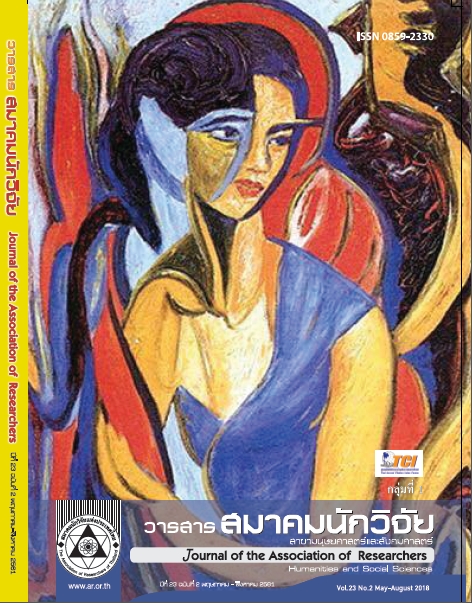Factors Affecting the Quality of Doctor of Philosophy Program in Public Administration: A Case Study of the Faculty of Political Science, Ramkhamhaeng University
Main Article Content
Abstract
This research aimed to study the quality of the Doctoral of Philosophy Program in Public Administration, Faculty of Political Science, Ramkhamhaeng University in terms of the overall satisfaction of students and the overall quality of the program. It also included the analysis of the relationships between the teaching and learning management standard, the qualification of instructors and advisors, the characteristics of students, the advisory approaches, and the learning atmosphere with the program’s quality. The survey of employers’ satisfaction with graduates’ performances were also conducted. The researchers employed quantitative survey research approach. Questionnaires were emailed to 70 population of graduates from batch 7-11 and their employers. Response rates comprised 65.71% and 58.57 % from graduates and employers respectively. Findings revealed that the teaching and learning management standard, the qualification of instructors and advisors, the advisory approaches, and the learning atmosphere exhibited positive relationships with the program’s quality at the statistically significant level of 0.05. However, the characteristics of students did not correlate with the program’s quality significantly.
Article Details
บทความที่ปรากฏในวารสารนี้ เป็นความรับผิดชอบของผู้เขียน ซึ่งสมาคมนักวิจัยไม่จำเป็นต้องเห็นด้วยเสมอไป การนำเสนอผลงานวิจัยและบทความในวารสารนี้ไปเผยแพร่สามารถกระทำได้ โดยระบุแหล่งอ้างอิงจาก "วารสารสมาคมนักวิจัย"
References
Crosby, P. B. (1979). Quality Is Free: The Art of Making Quality Certain. New York: McGraw-Hill. Elshaer, Ibrahim. (2012). “What Is The Meaning of Quality?” MPRA Paper No. 57345.
Felbinger, Claire L., Holzer, Marc and White, Jay D. (1999). “The Doctorate in Public Administration: Some Unresolved Questions and Recommendations,” Public Administration Review. Vol. 59, No. 5 (Sep – Oct): 459-464.
Garvin, D. A. (1984). “What Does “Product Quality” Really Mean?” Sloan Management Review. 26(1): 25-43. ISO 9000. (2005). Quality Management System – Fundamentals and Vocabulary. International Organization for Standardization. Geneva, 2000, p. 7.
Juran, J. M. and Godfrey, A. B. (1999). Quality Control Handbook. New York: McGraw-Hill.
Kienle, Alyson W. and Loyd, Nicole L. (2005). “Globalization and the Emergence of Supranational Organizations: Implications for Graduate Programs in Higher Education Administration,” College Student Journal. 39. 3 (Sept.): 580.
Kim, et al. (2005). Quality Monitoring and Quality Criteria for Doctoral Programmes: A Global Perspective. London: Routledge: 147-161.
Minnick, A. and Halstead, L. (2002). “A Data-based Agenda for Doctoral Nursing Education Reform,” Nursing Outlook. 50(1): 24-29.
Ojasalo, J. (2006). “Quality for the Individual and for the Company in the Business-to-business Market: Concepts and Empirical Findings on Trade-offs,” The International Journal of Quality & Reliability Management. 23(2/3): 162-178.
Ryall, J. and Kruithof, J. (2001). The Quality of Systems Handbook. Australia: Consensus Books. Seawright, K. and Young, S. A. 1996. “A Quality Definition Continuum,” Interfaces. 26(3): 107-113.
Tuchman, B. W. 1980. The Decline of Quality. New York: Times Magazine, 2 November: 38-47.


